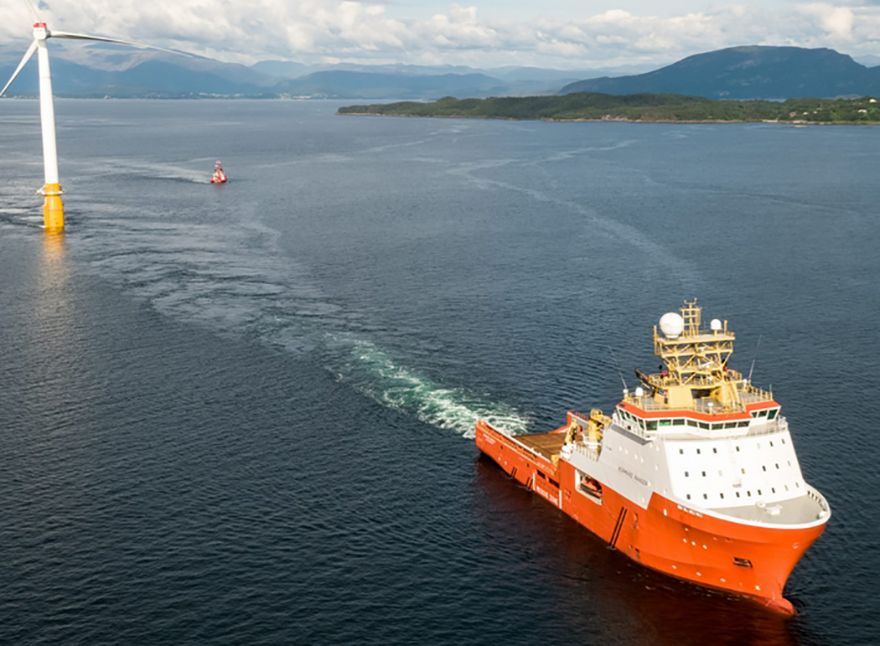
UK floating offshore wind could reach “subsidy-free” levels by the early 2030s, according to a study completed by the
Offshore Renewable Energy (ORE) Catapult’s Floating Offshore Wind Centre of Excellence (FOW CoE) in Glasgow.
The
Floating Offshore Wind: Cost Reduction Pathways to Subsidy-Free study suggests large floating offshore wind projects could secure Contracts for Difference (CfD) strike prices below current wholesale electricity price forecasts as early as 2029, depending on the deployment scenario pursued by the UK.
It also highlights the vital role floating offshore wind will play in the UK’s journey to net zero and towards delivering 100GW of offshore wind by 2050, in line with the recent Climate Change Committee’s Sixth Carbon Budget.
The study summarises work undertaken as part of the FOW CoE’s Cost Reduction Pathways project, which used GIS mapping software to develop 75GW, 100GW and 150GW offshore wind deployment scenarios to 2050. An initial 20GW of floating offshore wind projects were defined in detail – in terms of location, scale and technology deployed.
The team developed the Cost Reduction Pathways Model (CRPM) to quantify the associated reduction in the Levelised Cost of Energy (LCOE) of floating offshore wind for each of the scenarios. Key inputs to the CRPM included offshore wind deployment rates (UK and international), project component level learning rates (UK and international) and the cost of capital.
The “bottom up” approach to developing the CRPM involved extensive stakeholder engagement with the FOW CoE’s 13 industry partners, key stakeholders, technical advisors, supply chain, finance and insurance organisations.
The model identified areas off the East and North East of Scotland, within the Celtic Sea and off the North East of England as areas of high potential for short and medium term floating offshore wind deployment.
The CRPM highlights the critical role of both deployment rates and innovation in floating offshore wind cost reduction. In the short term and medium term, the primary driver of UK floating offshore wind cost reduction is scale of UK deployment, augmented by innovation. In the longer term, the primary driver is innovation, augmented by UK and international deployment rates.
With respect to the potential for floating offshore wind to deliver high levels of UK Gross Value Add (GVA), the rate and timing of this deployment is critical. Significant early deployment of floating offshore wind in the UK is vital to the UK securing high levels of GVA, and to ensuring the UK establishes a credible and cost-effective route to delivering 100GW of offshore wind by 2050.
Number of recommendationsThe study makes a number of recommendations to support the rapid cost reduction of UK floating offshore wind, including:
– The UK’s floating offshore wind industry should be supported to grow rapidly, establishing a clear long-term vision for the growth of the industry. Consideration should be given to raising the target of 1GW of floating offshore wind by 2030 to 2GW, with a further 4GW of floating offshore wind in receipt of a CfD for deployment in the early 2030s.
– Early support for technology innovation is needed to drive long-term cost reduction and maximise UK content in floating wind projects. It will also be a key driver of UK GVA through exports of products and services.
– An offshore leasing round should be established in the next two years to facilitate access to the most cost-effective deployment areas in England and Wales, specifically the Celtic Sea and North East England.
Chris Hill, ORE Catapult operational performance director, said: “It is vital the UK takes a strategic approach to supporting the rapidly developing industry UK floating wind industry to ensure the potential benefits are realised.
“This study provides a strong evidence base for key policy decisions relating to the growth and scale of the industry in the UK – both in terms of the focus for support, and timing.
“We look forward to continuing our work with key stakeholders to develop a long-term vision for floating in the UK and supporting the rapid growth of the industry – both in our journey to Net Zero and also as a key driver of economic recovery and growth.”
Rebecca Williams,
RenewableUK’s head of policy and regulation, said: “As this report shows, floating wind can repeat the success of fixed-bottom offshore wind by achieving spectacular cost reductions over the course of this decade, to a point where we can generate electricity below the wholesale price.
“Floating wind has a key role to play in hitting the UK’s net zero emissions target – we can’t get there without it. As long as industry and Government work closely together to support the rapid expansion of floating wind, we can maintain our global lead in this innovative technology and export it worldwide, securing jobs and investment for UK companies.
“The Government has set the industry a target of installing one gigawatt of floating wind by 2030 as our next step forward, but we think we can aim higher and double that as long as we get the policy framework right.”